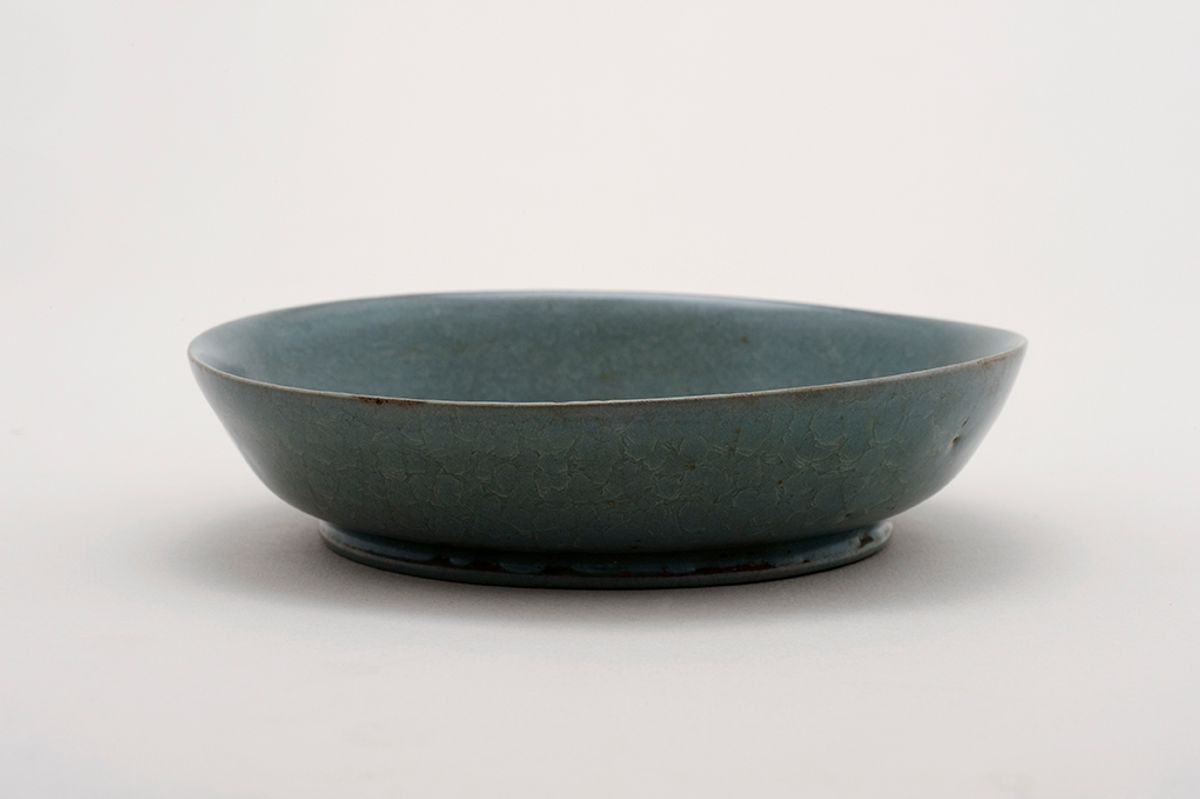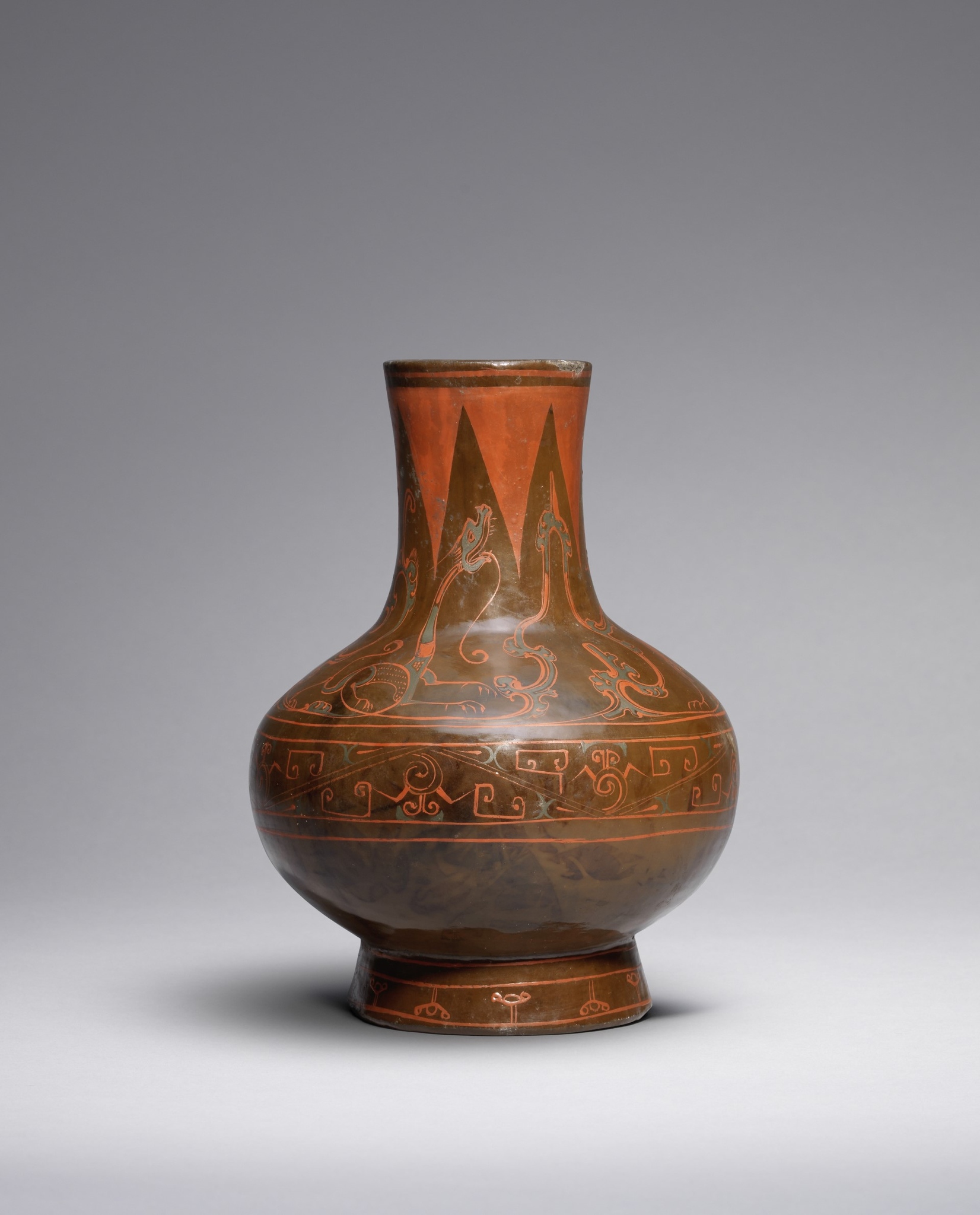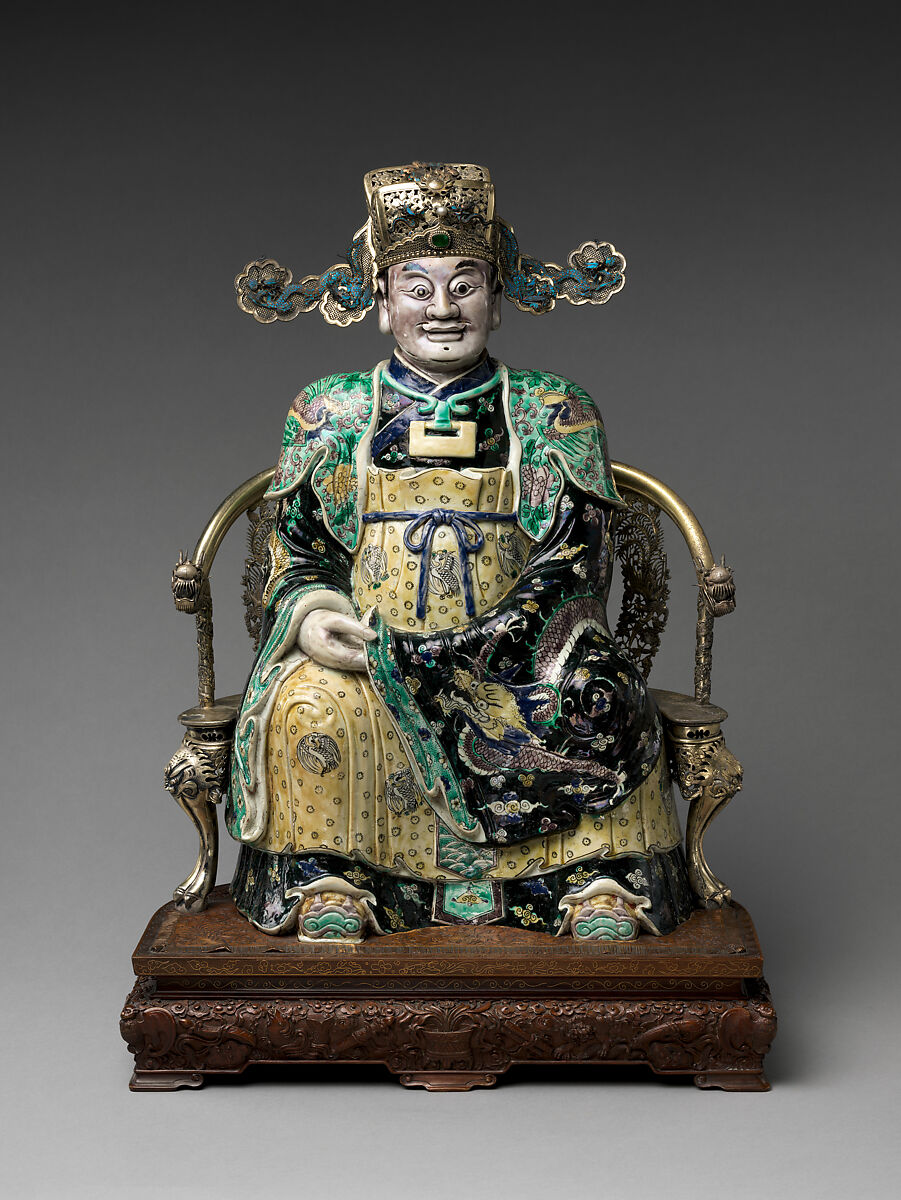Previously believed to be Korean, a bowl in the British Museum was found to be a valuable Chinese imperial ceramic
The "Art Newspaper" reports that the British Museum has recently discovered an extraordinary glazed ceramic piece that is nearly one thousand years old. The piece, which is a brush washer used for cleaning calligraphy brushes, was initially regarded as a harmonious yet unprepossessing dish. It is part of the celebrated Ru kilns that produced imperial ceramics for the Northern Song Dynasty. Only a few stoneware pieces from this kiln have survived over time, making this discovery exceptionally rare.Percival David, one of the most prominent Western collectors of Chinese ceramics, acquired the dish in New York in 1928. His collection has
A rare Chinese Han period lacquer vessel with dragon motifs
This rare Chinese vessel is raised on a tall, slightly flaring foot and uniformly coated in reddish-brown lacquer. It was primarily used as a wine container. The shoulder of the vessel features gracefully flowing lines and dragons resting with their tongues protruding. The positioning of the dragon heads captures the viewer's attention, directing it to the symmetrical triangular patterns encircling the neck. Both the body and the foot are adorned with bands of geometric decorations.It's worth mentioning that the use of lacquerware in China has a long history traceable back to the Neolithic period. Lacquerware was adopted as a highly
Chinese people welcome the God of Wealth and Prosperity
The Chinese culture celebrates the auspicious occasion of the Lunar New Year by welcoming the God of Wealth, Fortune, and Prosperity on the fifth day of the lunar calendar. The figure of Caishen has been identified as a mythological deity, revered in the Chinese folk religion and Taoism. The festival of New Year, spanning two weeks, witnesses the lighting of incense in Caishen’s temple, especially on the fifth day of the first lunar month, and exchanging of the traditional New Year greeting, "May you become rich" ("Gongxi facai"), among friends and acquaintances.The historical figures embodied by Caishen have been numerous.
Dragon as a symbol of might and enlightenment in Chinese art
With the countdown to the Year of the Dragon underway, the anticipation for this revered occasion is palpable. The only mythical creature in the Chinese zodiac, the Year of the Dragon, is believed to be associated with vitality, good fortune, and opportunities. Chinese art has a rich history of incorporating dragon imagery, with depictions dating back to the Neolithic period (ca. 7000–1700 BCE). While the symbolism of the earliest dragons on jade and bronze objects remains shrouded in mystery, by the Han dynasty (206 BCE–220 CE), dragons were believed to be water creatures that inhabited rivers and oceans. They were considered
An Armenian sitter as a “philosopher” in a Dutch Golden Age painting
The official website of the Royal Collection Trust, which represents the British royal family's collection, proudly showcases a Dutch Baroque School oil painting. Previously entitled "Astrologer" and misattributed to Rembrandt, the painting has been rightfully credited to the brush of Pieter Symonsz Potter (1597 in Enkhuizen – 1652 in Amsterdam), father of Paulus Potter. Potter worked in Leiden from 1628 to 1631, a period when Rembrandt and his student, Gerrit Dou, developed a unique painting style featuring exotic figures in atmospherically lit interiors.Currently titled "The Philosopher," the painting portrays a male figure dressed in the fanciful attire favored by Rembrandt.








